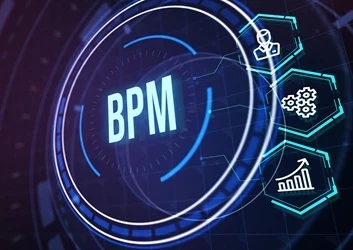|
Customer service initiatives often put strong emphasis on culture, friendliness and professionalism. But that's not enough, writes columnist Chris Taylor. Great process management is what you really need. I’m pretty upset. I just paid $37.95 for the benefit of renewing my website domain name just so I can then transfer over to another ISP. The outcome was guaranteed long before I spent hours on the phone with various customer service people over the past month. The outcome was guaranteed because the company I was working with doesn’t have processes underlying customer service. They haven’t connected those dots. |
Do your processes leave your customers hanging? |
Smart and friendly
They have good staff that are smart, friendly and really want to help. They just don’t have a foundation of processes to follow that allow the support staff to have continuity between calls or to offer the same advice or solution each time someone needs a hand. Critical information that needs to be brought up isn’t. Time-sensitive actions aren’t spelled out or executed.
We don’t need to go into the gory details…suffice to say it was about three hours over three calls over three weeks. Tidy numbers for an untidy situation.
Maybe part of the problem is my background in process. As Jaisundar Venkat wrote about, Process comes before a smile in customer service. Jaisundar says, astutely:
"For us process folks, particularly, it seems more often than not to make it worse because we are thinking "how can you not know…" and "how can there not be….." and "how could you not have…" And before you know it, you find a huge reason to believe that the organization has really not thought through customer service well enough. You clearly see all the wrong ways in which they see their ‘customers’ and how alarmingly short-sighted the service activities are that they’ve built around the customer, aka YOU."
The end result of not connecting the dots between customer service and business process is a customer that feels that they aren’t important, worth retaining, or central to how your organization makes its living.
Southwest Airlines and empowerment
Now there are those that would take issue with this idea that process comes first. Quite a few customer service initiatives put strong emphasis on culture, friendliness and professionalism. But that isn’t enough and I’d argue that isn’t where to start.
Southwest Airlines famously empowers every employee to solve a problem, but if we look deeper at what Southwest does, every employee must first know the boundaries and the avenues for solving a problem…the process.
What Southwest accomplishes is even more than empowerment. By giving employees knowledge of and control over the process they motivate individuals to move beyond their narrow area of responsibility and to act in the best interests of the overall process (and thusly, the company). They lessen competition across business silos and contribute to a "We’re in this together" mentality in the company. For Southwest, process underlies customer service and promotes connectedness in an airline industry notorious for silo’d operations and terrible customer service.
Adaptive process
There are those who’ll read this and immediately trumpet the benefits of highly adaptive process management. But this isn’t about the benefits of one type of process management style over another. The key takeaway is that process management itself, in the many forms it can take, is foundational to layering on culture, friendliness and professionalism.
Great process management sets the terms for engaging the customer. It lets the agent know what boundary conditions look like and when to ‘punt’ to a supervisor or take action that might include handoffs and follow-ups. As Jaisundar says, process comes before the smile, before the, "How can I help you?" and before the, "We appreciate your business."
[inlinead]




















